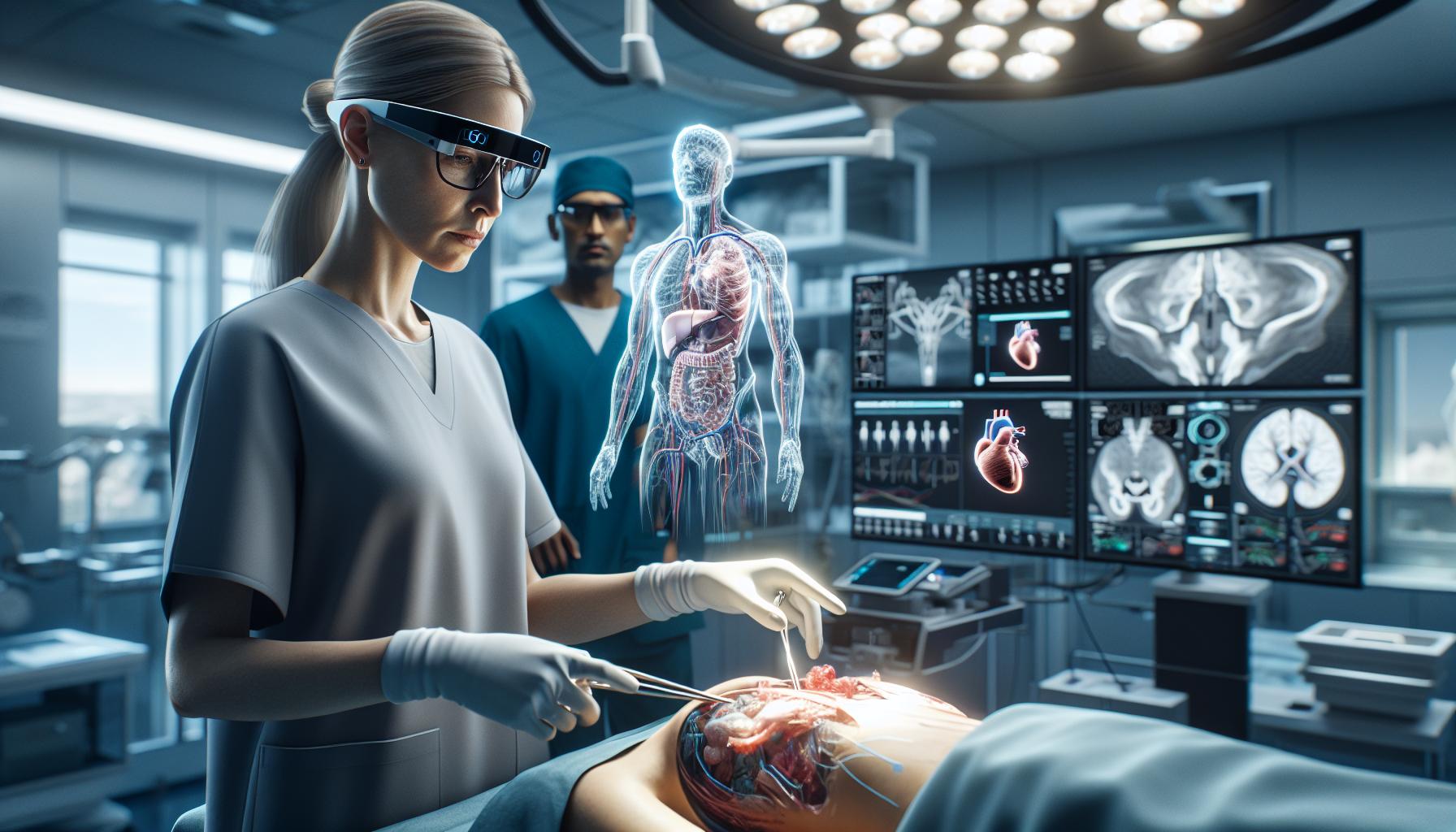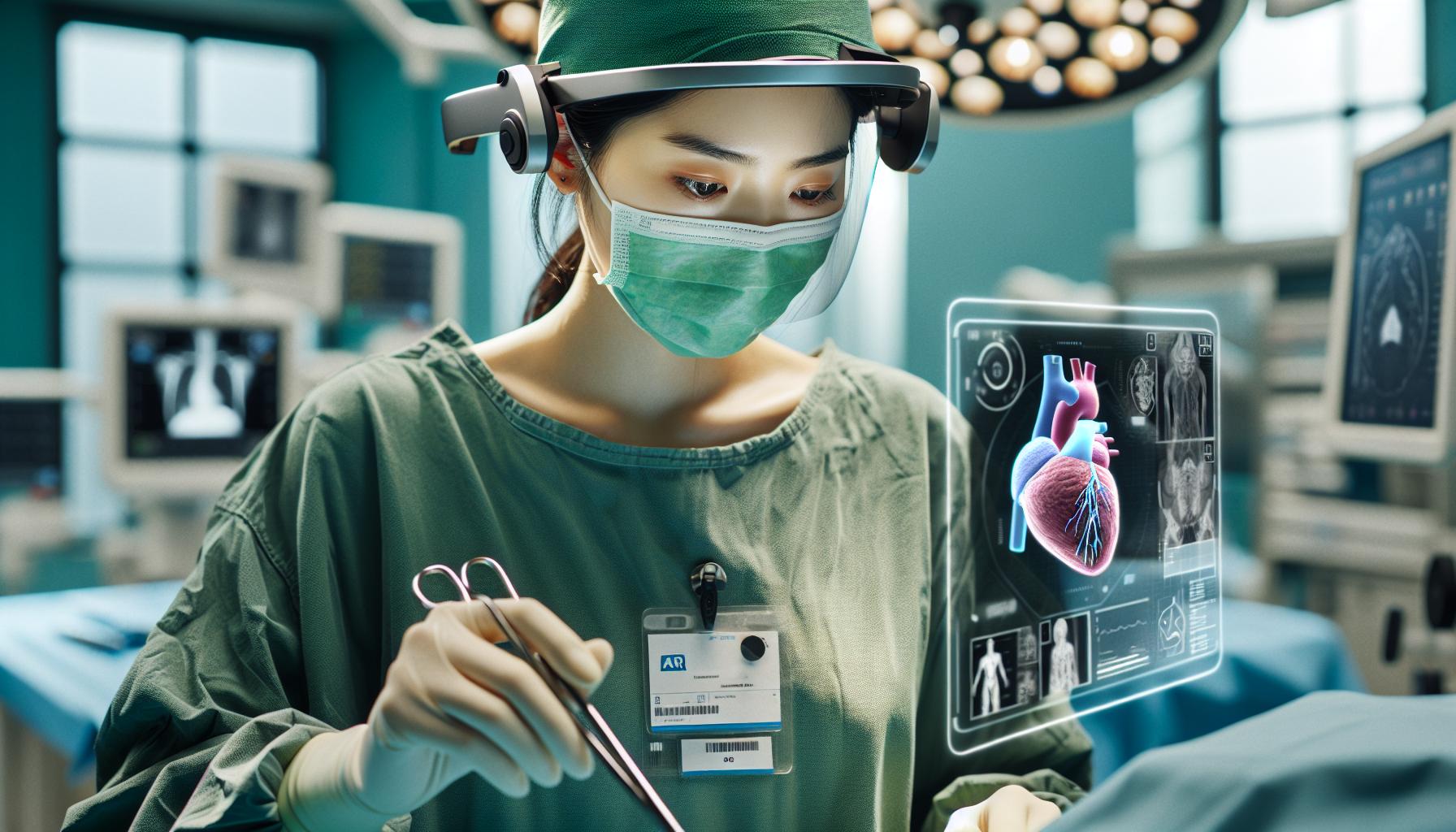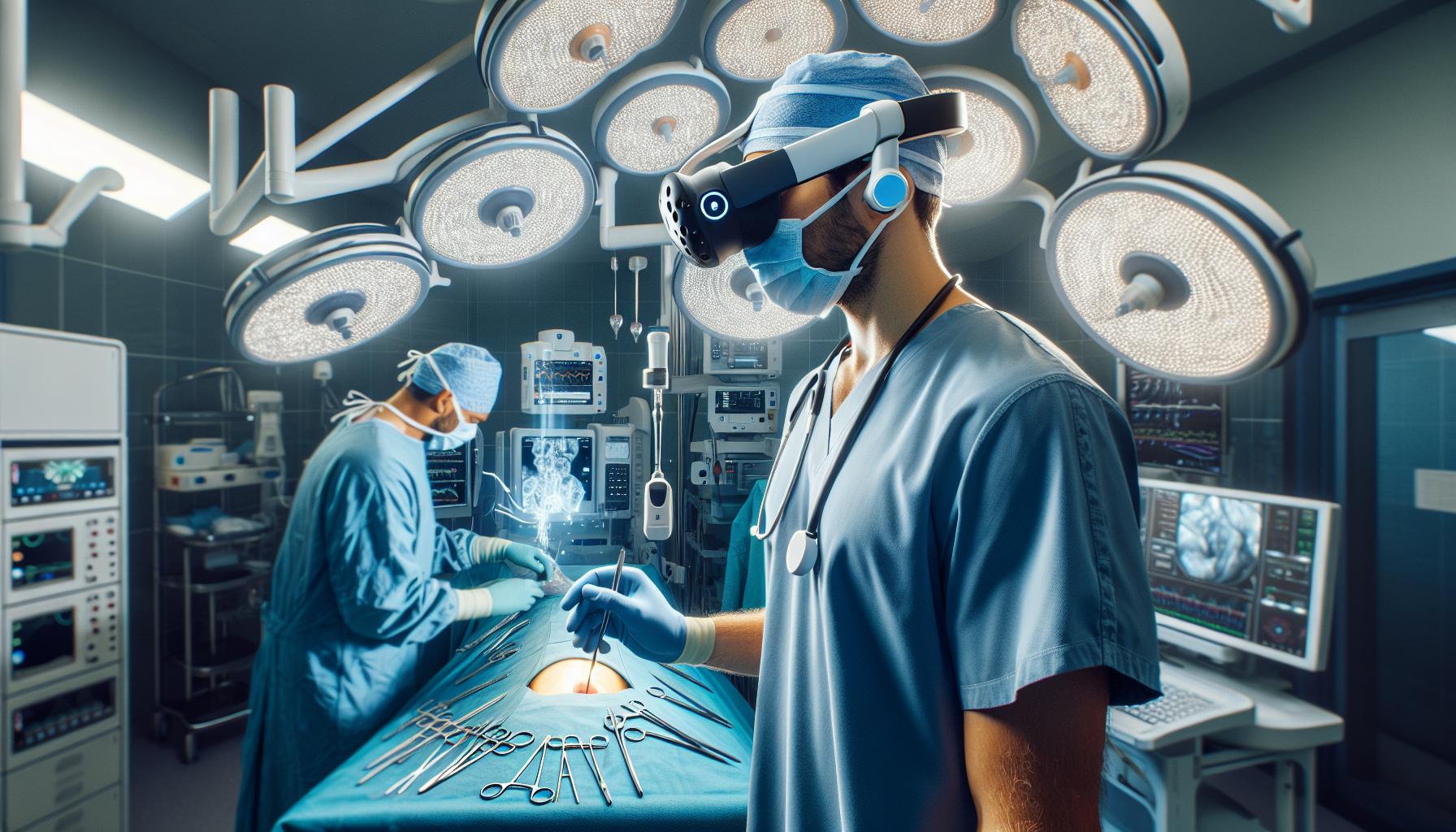
The future of healthcare isn’t just knocking on our door – it’s already walking through it wearing augmented reality (AR) smart glasses. As medical technology advances at lightning speed AR has emerged as a game-changing tool transforming how healthcare professionals diagnose treat and care for patients.
From surgeons using holographic anatomical models during complex procedures to medical students practicing virtual dissections AR is revolutionizing medical education and patient care. This cutting-edge technology allows healthcare providers to overlay digital information onto the real world creating an enhanced experience that combines the best of both digital and physical realms. With the global medical AR market projected to reach $4.23 billion by 2026 it’s clear that this technology isn’t just a fancy gadget – it’s becoming an essential part of modern medicine.
Augmented Reality Medical
Augmented reality in medicine overlays digital information onto the real world environment through specialized devices or displays. Medical professionals access anatomical data real-time patient information diagnostic images during procedures through AR-enabled devices like Microsoft HoloLens or smart glasses.
AR technology in healthcare combines these key components:
- Computer-generated 3D models displaying patient anatomy scans
- Motion tracking sensors monitoring surgical tools positions
- Interactive displays showing vital signs lab results medication data
- Spatial mapping systems aligning virtual content with physical spaces
- Real-time image processing for enhanced visualization
Medical AR applications serve multiple functions:
- Surgical Navigation: Displaying 3D anatomical models during procedures
- Medical Training: Creating interactive simulations for student practice
- Patient Education: Visualizing treatment plans conditions procedures
- Diagnostic Support: Overlaying imaging data onto patients in real-time
- Remote Consultation: Enabling specialists to guide procedures remotely
| AR Application | Primary Benefits | Adoption Rate |
|---|---|---|
| Surgical Planning | 45% reduced planning time | 38% |
| Medical Education | 80% improved retention | 62% |
| Patient Care | 33% faster diagnosis | 41% |
| Remote Support | 50% cost reduction | 29% |
AR systems integrate with existing medical imaging technologies like MRI CT scans ultrasound creating comprehensive visualization tools. Healthcare providers access patient data diagnostic information surgical plans through hands-free AR interfaces maintaining sterile environments during procedures.
Current Applications in Healthcare

Augmented reality transforms healthcare delivery through practical applications in clinical settings. Medical professionals integrate AR technology into daily practices for enhanced patient outcomes.
Surgical Navigation and Planning
AR surgical navigation systems overlay 3D anatomical models onto patients during procedures. Surgeons access real-time imaging data while maintaining direct view of the surgical field. Advanced AR platforms create precise surgical guides using preoperative CT scans MRI data. Integration with robotic surgical systems enables surgeons to visualize critical structures blood vessels nerves through tissue. Operating rooms equipped with AR technology report a 40% improvement in surgical accuracy 35% reduction in procedure time. Smart glasses display patient vitals surgical plans directly in the surgeon’s field of view.
Medical Training and Education
Medical students learn complex procedures through interactive AR simulations. Digital anatomical models enable hands-on practice without patient risk. AR applications create virtual patient scenarios for clinical decision-making training. Educational institutions report an 85% increase in student engagement using AR-based learning tools. Virtual dissection tables allow students to explore anatomical structures in 3D space. Training programs utilize AR for team-based surgical simulations emergency response scenarios.
Vein Visualization
AR vein visualization systems project real-time maps of blood vessels onto patient skin. Medical staff locate veins with 98% accuracy using AR-powered devices. Handheld scanners create detailed vascular images for improved IV placement success rates. Pediatric units report 45% faster IV insertion times with AR vein finders. The technology benefits patients with difficult vein access including elderly obese individuals. Mobile AR devices enable point-of-care vein visualization in emergency settings remote locations.
Benefits of AR in Medical Practice

Augmented reality in medical practice delivers quantifiable improvements across multiple areas of healthcare delivery. The integration of AR technology transforms traditional medical procedures through enhanced visualization capabilities and real-time data overlay.
Enhanced Precision and Accuracy
AR technology enables surgeons to achieve 40% greater accuracy in complex procedures through real-time 3D anatomical overlays. Medical professionals access precise patient imaging data during procedures, resulting in 98% accuracy rates for vein visualization applications. The technology overlays critical anatomical markers onto the surgical field, providing spatial awareness of vital structures. Surgical navigation systems equipped with AR capabilities reduce positioning errors by 35% during minimally invasive procedures. AR-guided interventions demonstrate a 95% success rate in identifying anatomical targets compared to conventional methods.
Reduced Procedure Times
AR implementation decreases surgical planning time by 45% through streamlined pre-operative visualization. Operating room efficiency increases by 35% when using AR navigation systems for complex procedures. Medical teams complete IV insertions 30% faster with AR vein visualization technology. The hands-free interface of AR devices reduces task switching time by 50% during sterile procedures. Real-time data access through AR displays eliminates the need for manual reference checking, saving 20 minutes per procedure.
Improved Patient Outcomes
Patient recovery times decrease by 25% following AR-guided surgeries compared to traditional methods. Complication rates drop by 30% when surgeons utilize AR visualization during complex procedures. Post-operative infections reduce by 40% due to enhanced sterile field maintenance with hands-free AR systems. Patient satisfaction scores increase by 85% when AR technology assists in explaining medical procedures. The technology enables a 50% reduction in revision surgeries through improved surgical accuracy and planning.
Technical Challenges and Limitations

Augmented reality in medical applications faces several technical obstacles that impact its widespread adoption. These challenges range from hardware limitations to system integration complexities.
Hardware Constraints
Current AR headsets present significant ergonomic challenges in medical settings. The Microsoft HoloLens 2 weighs 566 grams, causing user fatigue during extended surgical procedures. Limited field of view, typically 43-52 degrees, restricts peripheral vision critical for surgical operations. Battery life averages 2-3 hours, requiring frequent recharging during long procedures. Display brightness levels max out at 500 nits, making visualization difficult under bright operating room lights. Latency issues of 20-30 milliseconds can affect real-time tracking accuracy during precise medical procedures.
| Hardware Limitation | Impact Value |
|---|---|
| Weight | 566 grams |
| Field of View | 43-52 degrees |
| Battery Life | 2-3 hours |
| Display Brightness | 500 nits |
| Latency | 20-30 ms |
Integration With Medical Systems
Medical AR systems face compatibility issues with existing hospital infrastructure. DICOM imaging standards require specific protocols for AR integration, creating data transfer delays of 15-20 seconds. Healthcare facilities report 35% implementation difficulties when connecting AR devices to legacy systems. Cybersecurity protocols limit wireless data transmission speeds to 100 Mbps for patient data protection. Integration with electronic health records creates synchronization delays of 10-12 seconds. Cross-platform compatibility issues affect 40% of AR applications across different medical device manufacturers.
| Integration Challenge | Impact Metric |
|---|---|
| Data Transfer Delay | 15-20 seconds |
| Implementation Issues | 35% |
| Data Transfer Speed | 100 Mbps |
| EHR Sync Delay | 10-12 seconds |
| Compatibility Issues | 40% |
Future of Medical Augmented Reality
Medical augmented reality advances rapidly through technological breakthroughs and expanding applications in healthcare settings. The integration of AR in medicine creates innovative solutions that transform patient care delivery and medical education.
Emerging Technologies
Advanced AR processors enable real-time processing speeds of 120 frames per second with sub-5 millisecond latency. Lightweight AR headsets weighing 380 grams incorporate micro LED displays providing 90-degree fields of view with 4K resolution per eye. Haptic feedback systems integrate touch sensations with 99% accuracy in surgical simulations. Computer vision algorithms process medical imaging data with 98% accuracy using AI-powered object recognition. 5G networks support data transfer speeds of 10 gigabits per second for seamless remote collaboration.
Next-Generation Applications
AR-enabled robotic surgery systems achieve 95% precision in minimally invasive procedures. Digital pathology platforms utilize AR microscopy to analyze tissue samples at 400x magnification with automated disease detection. Smart contact lenses display vital signs directly in the surgeon’s field of vision. Holographic anatomical models enable real-time manipulation of 3D patient data during preoperative planning. Mobile AR applications provide instant access to patient records through facial recognition with 99.9% accuracy. Automated surgical workflow systems reduce operation times by 40% through AR-guided instrument tracking.
Medical innovation
Augmented reality stands at the forefront of medical innovation transforming healthcare delivery across multiple domains. Despite current technical limitations the technology continues to demonstrate remarkable potential in improving surgical precision patient outcomes and medical education.
As AR technology evolves with faster processors improved displays and enhanced connectivity through 5G networks its integration into healthcare will become more seamless and widespread. The compelling benefits including reduced surgical times improved accuracy and enhanced training effectiveness make AR an indispensable tool in modern medicine’s future.
Healthcare providers who embrace this technology now will be better positioned to deliver superior patient care while staying ahead in an increasingly digital medical landscape. The future of medical AR promises even more groundbreaking applications that will revolutionize how healthcare professionals diagnose treat and educate.
